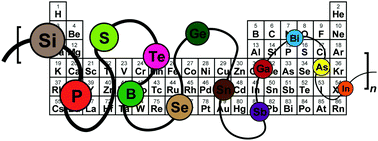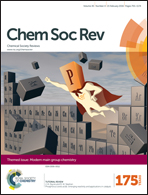Polymers and the p-block elements
Abstract
A survey of the state-of-the-art in the development of synthetic methods to incorporate p-block elements into polymers is given. The incorporation of main group elements (groups 13–16) into long chains provides access to materials with fascinating chemical and physical properties imparted by the presence of inorganic groups. Perhaps the greatest impedance to the widespread academic and commercial use of p-block element-containing macromolecules is the synthetic challenge associated with linking inorganic elements into long chains. In recent years, creative methodologies have been developed to incorporate heteroatoms into polymeric structures, with perhaps the greatest advances occurring with hybrid organic–inorganic polymers composed of boron, silicon, phosphorus and sulfur. With these developments, materials are currently being realized that possess exciting chemical, photophysical and thermal properties that are not possible for conventional organic polymers. This review focuses on highlighting the most significant recent advances whilst giving an appropriate background for the general reader. Of particular focus will be advances made over the last two decades, with emphasis on the novel synthetic methodologies employed.

- This article is part of the themed collection: Modern Main Group Chemistry

 Please wait while we load your content...
Please wait while we load your content...